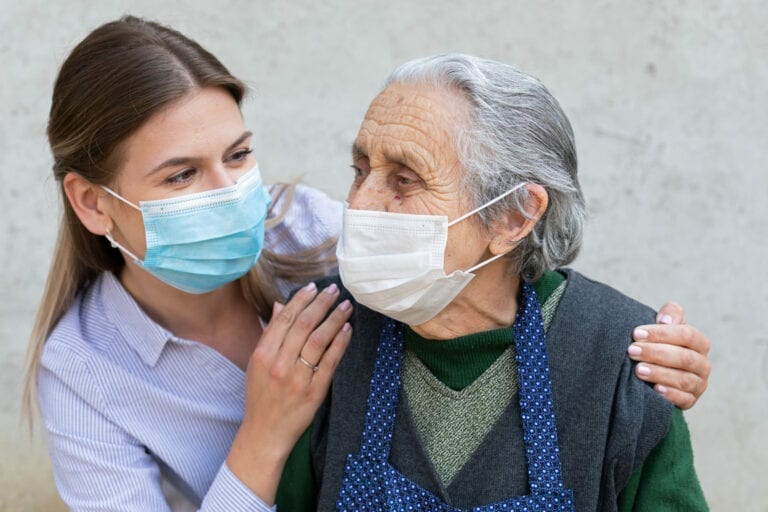Most Americans prefer to die in a home or home-like order, yet more than 30 % die in severe care hospitals. Patients who are very sick often say that they want their pain and other symptoms to be treated well, that they don’t like to be kept alive for too long, want to feel in control, and want to get closer to their loved ones. Similarly, the caregivers want their loved ones to face care or hospice care with their wishes and relief.
Hospice helps patients reach these goals at the end of their lives. Hospice is a great example of high-quality, caring care for people with illnesses that are getting worse. This specialist provides medical care, pain and symptoms, and emotional and spiritual support that follows the patient’s needs and desires. The hospice provides emotional support to the patient’s loved ones, even during mourning. This chapter will talk about care in the US, including its structure and how it is given, its growth, and the things that make it hard to use.
Hospice Movement
Hospice Movement began with the work of Dam Sicily Sanders, whose main purpose was to make people die better. Sanders launched St. Christopher Hospice in South London in 1967. He is known to come up with the basic ideas of Hospice Care, which are now the basic values of Hospice programs worldwide.
In 1974, Florence Wald, RN, started the first hospice program in the US. It was called Connecticut Hospice, based on St. Christopher’s Hospice. Both programs were for people who were in a hospital. Hospice programs in the US are based on a model that focuses on care in the patient’s home and helps patients die at home.
What is Hospice Care?
More and more people choose hospice care at the end of their lives. it is for people who are sick and nearing the end of their lives. It focuses on their care, comfort, and quality of life.
At some point, a serious illness may not be able to be cured, or the patient may decide not to go through certain treatments. Hospice is made for situations like this. The patient starts to care for the hospice, which is not responding to medical efforts to treat it or is not to slow down the disease.
Hospice care is like stroke, which helps the person comfort and helps the family, but does not try to cure the disease. Its given to those who are suffering from a temporary disease. If the doctor thinks the disease is gone, they have less than six months to survive.
A patient and their doctor need to talk about hospice care. People sometimes need to start early enough to get all the help it can offer. Maybe they wait too long to start hospice care, and by the time they do, they are too close to dying. Or, some people don’t qualify for hospice care in time to get the most out of it. Starting Hospice may Provide meaningful care and standard time with loved ones.
Where is hospice care provided, and who gives it?
Hospice is a way of caring for people, so it doesn’t have to happen in a certain place. It can be offered in two settings, at home or hospital, or a separate hospice center.
Hospice care collects a team of special skills. Every one of the deceased, the guardian, and the family works together to provide emotional, medical, and spiritual support to them.
A hospice team member sees the patient often, and someone is usually there to answer the phone 24 hours a day, seven days a week. Medicare and other insurance companies may pay for hospice care. Check to see if the person’s insurance will cover what’s going on.
It’s important to remember that stopping treatment for a disease that is not getting better does not mean stopping all treatment. A good example is an old man with cancer. If the doctor decides that the cancer is not responding to chemotherapy and the patient chooses to take care of the hospice, the chemotherapy will stop. Other kinds of medical care can go on as long as they help. For instance, if the person has high blood pressure, they will still get medicine.
Hospice gives a lot of help, but family and friends care for a person dying at home daily. The hospice team teaches the dying person’s family how to care for them and even steps in when the family needs a break. Respite care can be for a few hours or for as long as several weeks.
How does hospice care help people?
Families of caregivers through the Hospice program are more satisfied with life care than those who do not have hospice care services. Also, people who use hospice care are more likely to have their pain taken care of and less likely to have tests done on them or be given medicines they don’t need.
Hospice care offers various benefits, including greater family and patient control of specialized medical care, For patients, the surrounding of the family, the reduction of the isolation of patients, and better access to loved ones. Hospice care doesn’t require patients to accept that they will die soon or to have a DNR (do-not-resuscitate) order. Instead, the hospital works with each patient and family member to provide help and education so that they can be helped with death. The hospice care team is the most important part of hospice care.
Hospice Interprofessional Team for Hospice Care
The hospice nurse, the social worker, and the chaplain make up the core of the hospice team. Medicare says that the hospice agency must hire core team members. Hospice care is given at every level by the core hospice team. The nurse is in charge of ensuring all the care the patient gets is coordinated. The medical director of a hospice must also be on the interprofessional team (IDT). Together, these make up a hospice IDT, which makes a care plan for each patient and family unit unique. The goal of care is made to meet the physical needs of the patient as well as their emotional, social, and even spiritual needs.
The hospice team is made up of people from many different fields. It takes care of the patient’s pain and other symptoms and helps them and their families deal with the social, emotional, and spiritual parts of dying. It also gives the patient, and their family medications and medical equipment, teach the families how to care for the patient, and provides grief support and counseling to the surviving family and friends after the patient dies. Also, it lets people get short-term care in a hospital if their pain or symptoms are too much to handle at home or if their caregiver needs a break. An IDT can offer specialized services like speech and physical therapy when available.
What the physician does in hospice care
A doctor can play one of three roles: Hospice Medical Director (HMD), Attending Physician, or Consultant Physician. As the HMD, the physician assumes overall responsibility for the medical component of the care plans for all hospice patients, certifies and re-certifies a patient’s terminal illness, reviews and updates a patient’s plan of care, participates in Hospice’s quality improvement initiatives, and educates members of the IDT on evidence-based symptom management and communication techniques.
The HMD also collaborates closely with the patient’s attending physician, with the most significant role in determining and delivering the patient’s medical care. Most of the time, a patient’s regular doctor is a primary care doctor, but they could also be a sub-specialist. The idea is that the attending doctor will be the one who knows the patient best, probably because they have worked together before. If the patient or their family learns of a hospice, they must choose it. The attending physician can continue to serve in a similar collaborative capacity when the patient is admitted for care.
The hospice must hire a consultant physician, usually, a sub-specialist, who provides a service related to a hospice patient’s terminal illness (e.g., a single fraction of palliative radiation treatment for a painful metastatic lesion administered by a consulting radiation oncologist). The Hospice can bill Medicare Part A for these services and any other services that the HMD gives that are medically necessary. In addition to the per diem hospice rates that Medicare pays, these doctor bills are also paid back. The administrative tasks of the Hospice Medical Director, which are all part of the per diem rate, are all covered by this rate. Most of the time, the Hospice is attending physician bills Medicare directly for their services under Part B. They use a hospice modifier to show whether or not the service was “related” to the terminal hospice diagnosis.
Home Care Near Me. Let’s Get Started!
Get Immediate Help with Information, Costs & Payment Options.







